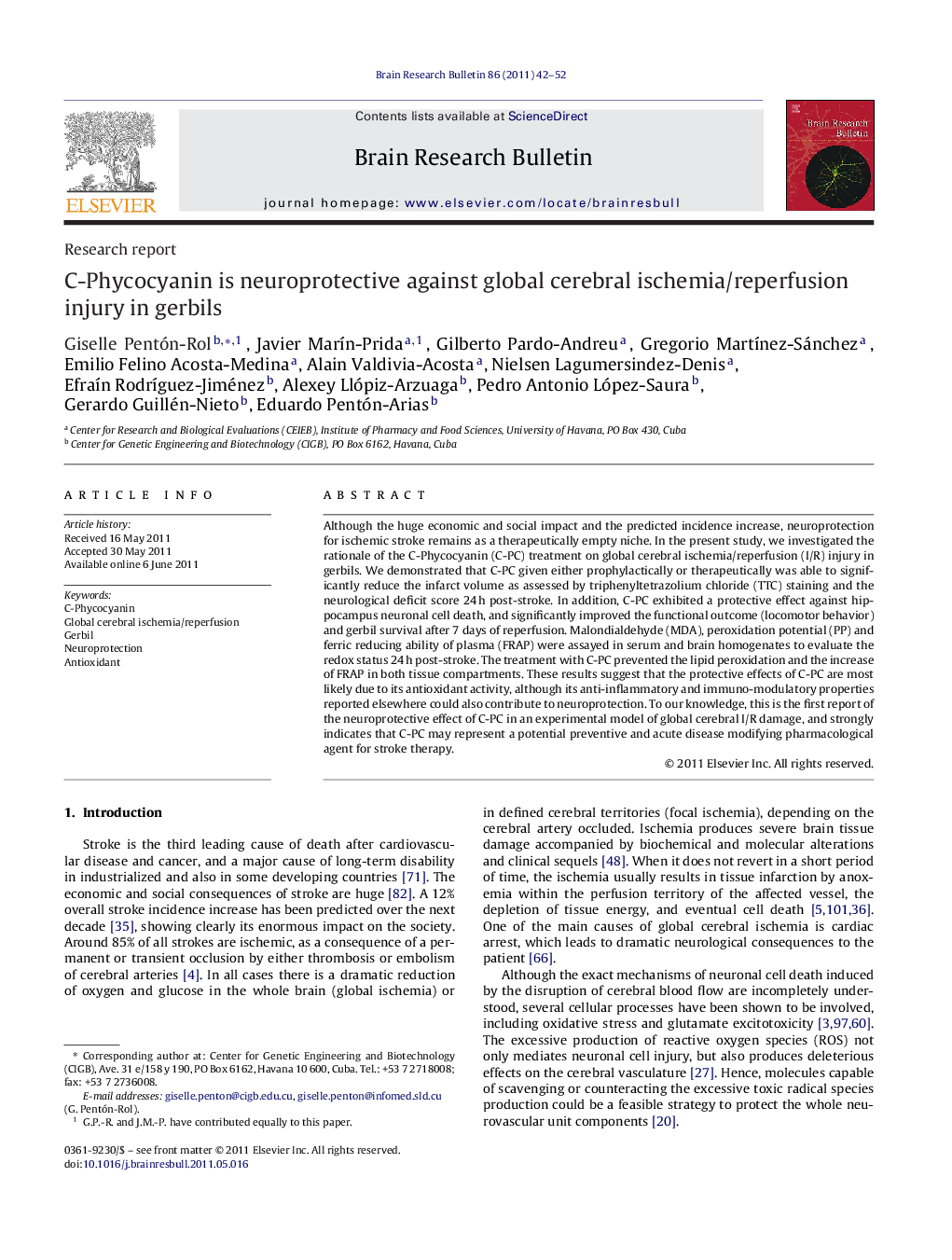| Article ID | Journal | Published Year | Pages | File Type |
|---|---|---|---|---|
| 6262172 | Brain Research Bulletin | 2011 | 11 Pages |
Although the huge economic and social impact and the predicted incidence increase, neuroprotection for ischemic stroke remains as a therapeutically empty niche. In the present study, we investigated the rationale of the C-Phycocyanin (C-PC) treatment on global cerebral ischemia/reperfusion (I/R) injury in gerbils. We demonstrated that C-PC given either prophylactically or therapeutically was able to significantly reduce the infarct volume as assessed by triphenyltetrazolium chloride (TTC) staining and the neurological deficit score 24Â h post-stroke. In addition, C-PC exhibited a protective effect against hippocampus neuronal cell death, and significantly improved the functional outcome (locomotor behavior) and gerbil survival after 7 days of reperfusion. Malondialdehyde (MDA), peroxidation potential (PP) and ferric reducing ability of plasma (FRAP) were assayed in serum and brain homogenates to evaluate the redox status 24Â h post-stroke. The treatment with C-PC prevented the lipid peroxidation and the increase of FRAP in both tissue compartments. These results suggest that the protective effects of C-PC are most likely due to its antioxidant activity, although its anti-inflammatory and immuno-modulatory properties reported elsewhere could also contribute to neuroprotection. To our knowledge, this is the first report of the neuroprotective effect of C-PC in an experimental model of global cerebral I/R damage, and strongly indicates that C-PC may represent a potential preventive and acute disease modifying pharmacological agent for stroke therapy.
⺠C-Phycocyanin (C-PC) prevents gerbil brain ischemia-reperfusion injury (IRI). ⺠C-PC reduces infarct volume and hippocampal cell death induced by IRI. ⺠Neurological outcome and survival correlated with histological findings. ⺠C-PC antioxidant, anti-inflammatory and immuno-modulatory properties support protection. ⺠First report on C-PC protection in brain IRI shows potential for stroke therapy.
